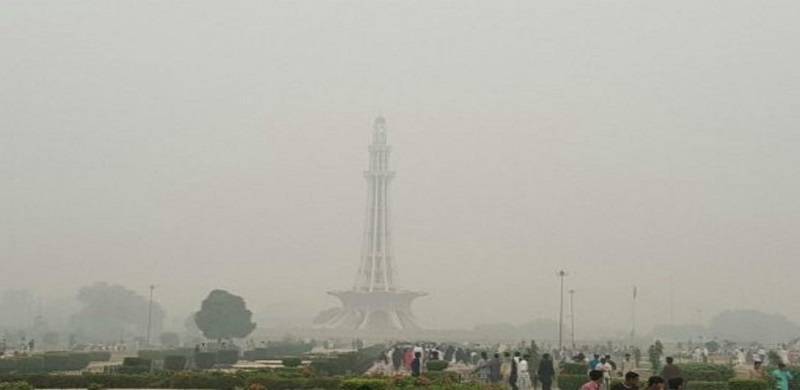
Lahore once flourished as the “City of Gardens”. Known for its lush greenery and streets full of life, today, it is known worldwide for something else: hazardous air quality. Every winter, Lahoris now brace for the return of the thick smog that fills our air and lungs with smoke and toxins. We anticipate respiratory issues, eye irritation, and worsening asthmatic conditions to arise again.
While smog season has become a regular catastrophe, the solutions proposed each year barely scratch the surface. This is why its important peer through the dense fog surrounding it and dig deeper into this issue. This issue isn’t just about the weather or pollution in isolation; it’s about Lahore’s approach to urban planning and development.
Smog and sprawl: A dangerous combination
Lahore’s rapid urban expansion has played a major role in creating today’s air quality crisis. Its population has swelled from 6.34 million in 1998 to over double 13 million in 2023. Over the past few decades, unregulated development has transformed green belts and open spaces into concrete jungles. High-rise buildings and sprawling suburbs lack the environmental foresight necessary for developing a healthy urban ecosystem. This unchecked sprawl forces people to depend heavily on vehicles, increasing pollution levels as roads are congested with cars, motorbikes, and trucks releasing harmful emissions into the air.
We can see the impact of this unbridled growth around every corner. According to a report by the Pakistan Air Quality Initiative, Lahore has consistently ranked among the most polluted cities globally. Currently, it ranks at No. 1 with its US AQI at 1,172. Meanwhile, urban planners and authorities continue to prioritise short-term growth goals, turning a blind eye to the environmental cost.
For years, the government has allowed unchecked construction in Lahore, with little regard for environmental standards. Builders cut down trees to make room for more apartments, while industrial zones — often situated near residential areas — release toxic fumes with little regulation. Zoning laws are either outdated or selectively enforced, which means factories, power plants, and even small industries operate close to densely populated areas. This focus on profit over public health has resulted in serious health issues; local hospitals are reporting an increase in respiratory illnesses, especially during months when smog levels peak. Did we learn nothing from the Bhopal tragedy?
The need for green spaces
One of the most effective ways to combat urban air pollution is through green spaces. Trees naturally filter harmful pollutants, but in recent years, Lahore’s green cover has shrunk drastically. Parks, that once served as natural lungs for the city, have been transformed into malls, high-rises, and housing societies.
City planners need to focus on reintroducing green belts and enforcing strict regulations on the preservation of remaining green spaces. For example, Singapore and Tokyo have both implemented green rooftops and urban forests to tackle pollution and arguably have better air quality than Lahore despite having comparable populations. Lahore could implement similar practices by mandating rooftop gardens on new buildings, creating small neighbourhood parks, and expanding existing green areas. If we want a sustainable solution, planting trees and creating green corridors must become a priority.
A call for smarter solutions
Beyond green spaces, Lahore desperately needs a more efficient and accessible public transport system. The Metrobus and Orange Line have made strides but are still limited in reach and capacity. Expanding these networks and offering incentives for electric vehicles and cleaner modes of transport, could help reduce our dependence on personal vehicles.
Cities like Bogota and Curitiba have demonstrated how high-quality, accessible public transport can reduce congestion and pollution levels. Moreover, enforcing stricter vehicle emissions standards could go a long way in curbing pollution. Currently, enforcement is weak at best, and smoke-belching trucks remain a common sight.
Every winter, authorities scramble to introduce seasonal measures — school closures, vehicle restrictions on certain days, and fines for crop burning. But these are temporary fixes. We need year-round solutions that address the root causes of Lahore’s smog crisis. This means holding industries accountable, enforcing emissions standards, and planning urban growth in a way that aligns with environmental sustainability.
Smog isn’t just a seasonal phenomenon; it’s a symptom of poor urban planning, unregulated growth, and neglect of environmental health. As Lahore’s residents, we cannot afford to sit and wait for authorities to recognise the urgency of this issue. The air we breathe should be a fundamental right, not a seasonal privilege. By transforming our approach to urban planning and enforcing stronger regulations, we can hope to reclaim our clean skies. Until then, we will continue to suffer, quite literally, with every breath we take.

